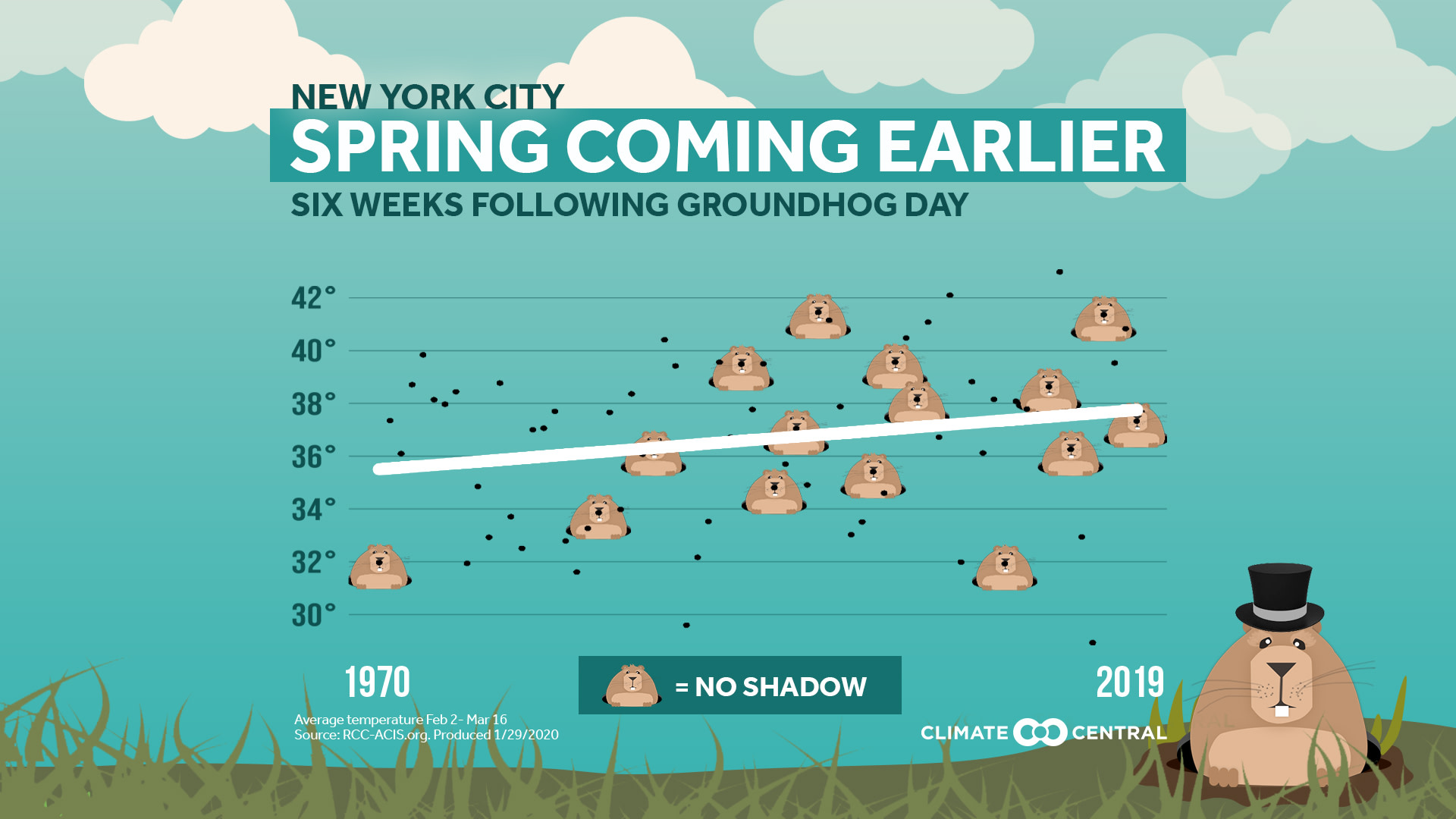Sunday is Groundhog Day, that fateful holiday when meteorologists must answer to a rodent and its shadow (or lack thereof). Like it or not, Punxsutawney Phil has been predicting earlier springs more often—14 times in the past 50 years, after only 5 times in the 73 years prior. While Phil’s year-to-year predictions are faring worse than a coin flip, his shift toward earlier springs may be onto something; the six weeks after Groundhog Day are warming up in 93% of the 244 cities analyzed. This year is no exception, with leaves appearing in the Southeast weeks before normal. Early springs do come at a cost, from early pest outbreaks and mistimed migrations to emboldened groundhogs.
Methodology: Groundhog Day graphics plot the average temperature between February 2 and March 16.
